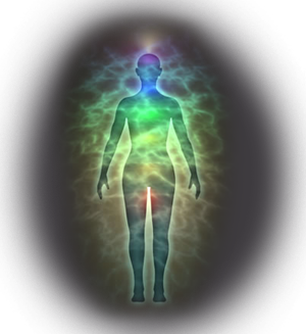
This technique is adapted from Swami Rama, and Elmer and Alyce Green, and brings together breath awareness and breathing rhythm, as well as focused awareness of various areas of the body.
With each breath, count a number and direct your total attention to a particular spot in your body; feel as if your entire being is in that spot.
With your first breath and on the count of one, place your attention in the centre of your forehead. With the second breath, count two and concentrate on your throat.
With three, move to your right shoulder. Then, with succeeding counts, move down your right arm (elbow, wrist, each finger) and back up the arm to the throat. Do the same with your left arm.
Next, move to your chest, abdomen, pelvis, then down your right leg (hip, knee, ankle, each toe), back up the leg, across the pelvis, and down your left leg. Return to your abdomen and move back upward, ending at the forehead again. Depending on your exact route, this should take about sixty breaths.
This exercise only takes a few minutes, and by the time you have returned to the centre of your forehead you will be deeply relaxed. As your attention shifts its focus from place to place, you may notice particular feelings or body sensations. In your mind’s eye, or through another sense that you are well acquainted with, you may also notice particular colours, or imagery. For example, as you notice tension dissipate, you might feel or even “see” it dissolve, or notice a warm glow of white light or other images/feelings may accompany the release.
HAPPY FLOATING!



 RSS Feed
RSS Feed